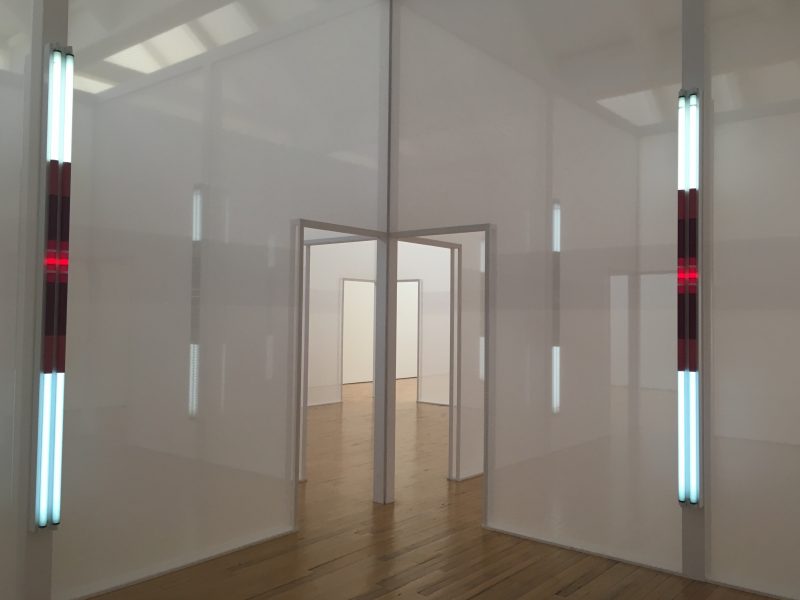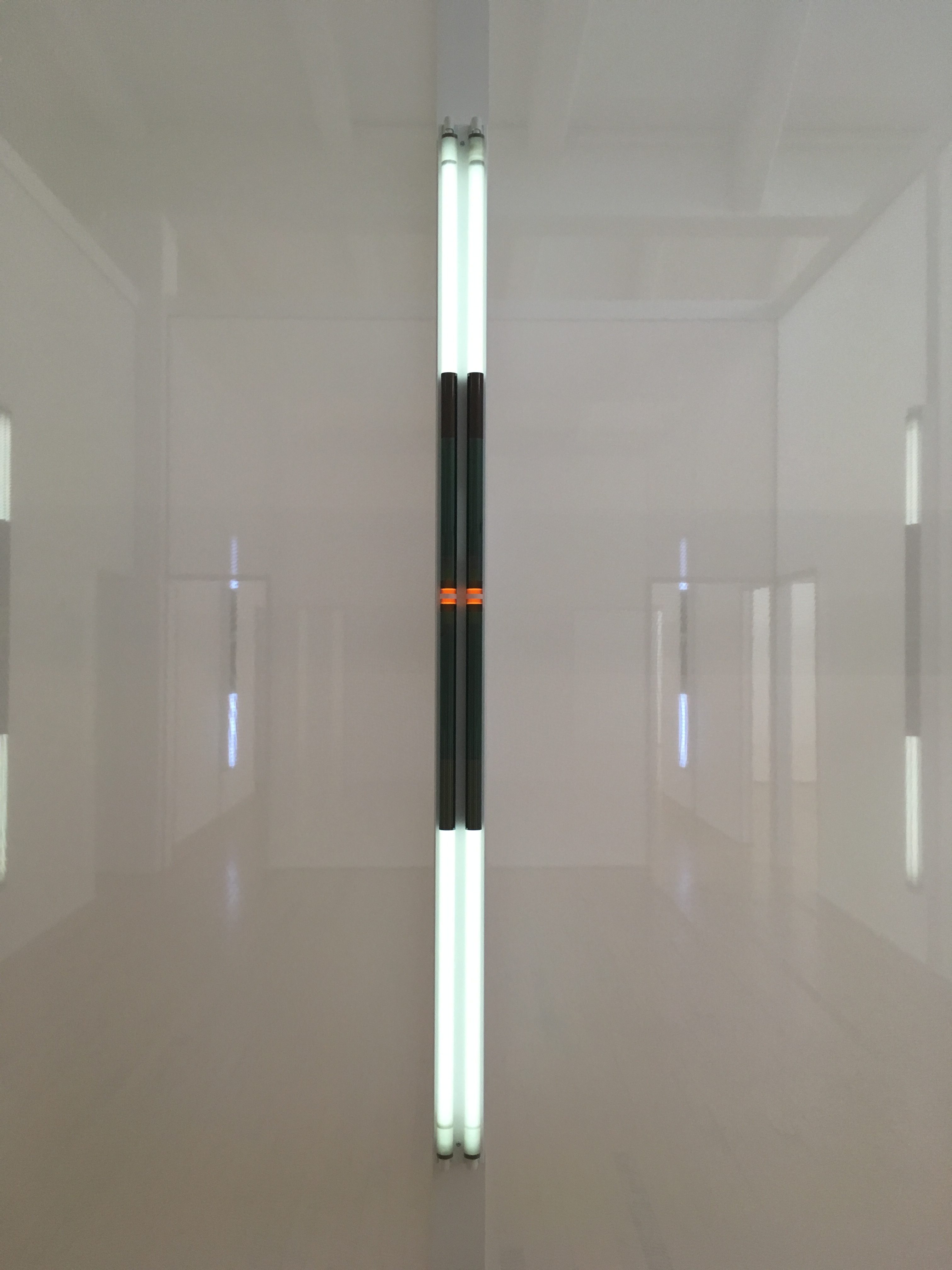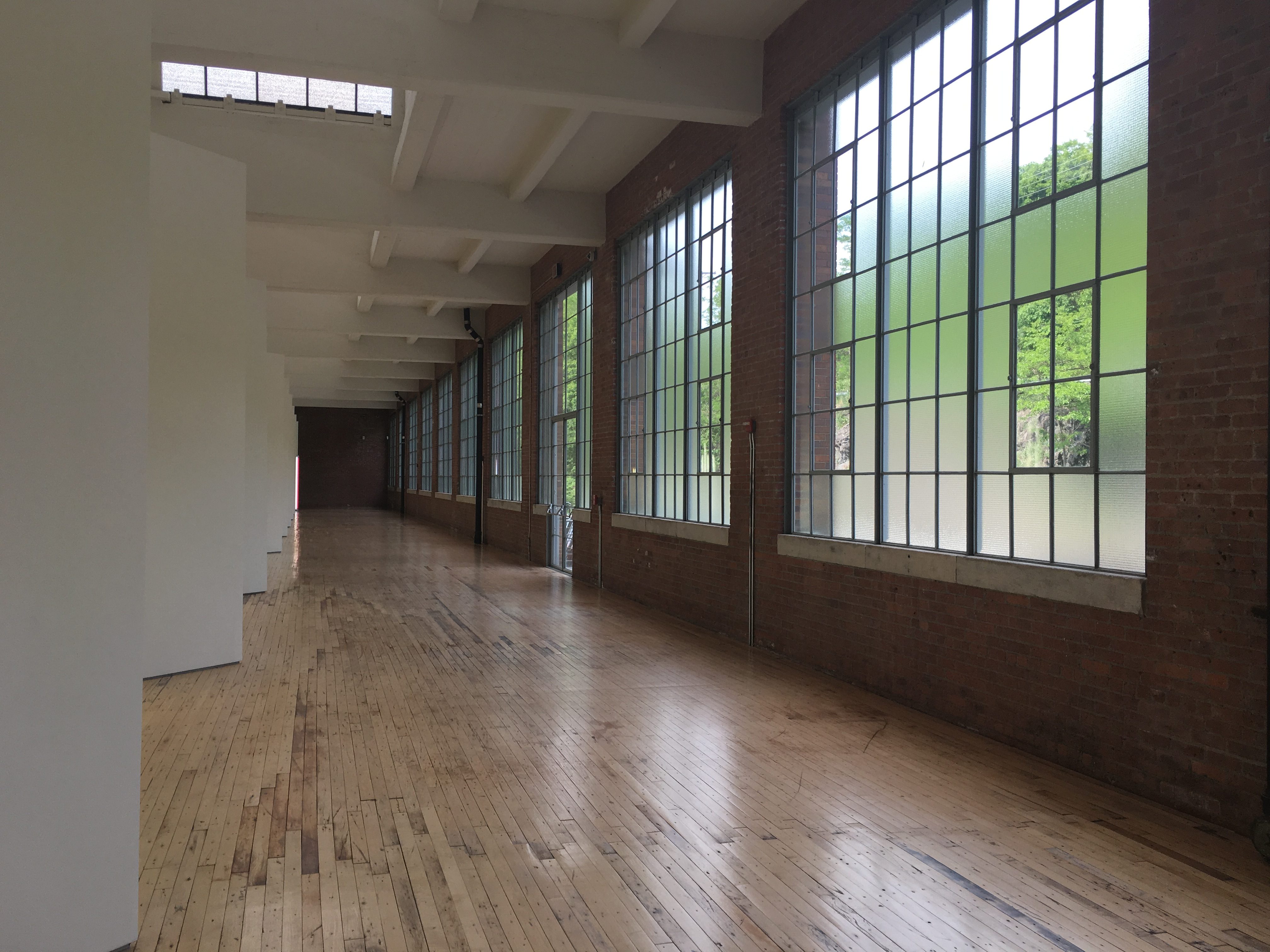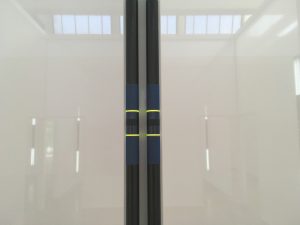How do you write about a work that is not meant to be written about? How do you write about an artist who is convinced that writing fails to communicate the subject of his art? How do you write about a work of art that is meant to be indescribable, comprehensible only by its silent presence? There is not one definitive way of doing so, but here, in some small way, I would like to try to break through this ineffability with words to capture the essence of Robert Irwin’s Excursus: Homage to the Square^3.
Robert Irwin (born in 1928) is an artist from California, known for his site-conditioned work, which he coined as Conditional Art. His work examines how perception works and how viewers respond to distortions of it. As one of the founding members of the West Coast movement “Light and Space,” he and others artists such as Larry Bell and James Turrell explore notions of personal involvement and sensitivity to light and space. They want to reveal how both light and space can make art an experience and not an object.
In the Photo: Robert Irwin’s Excursus: Homage to the Square^3 utilizes fluorescent lights to affect perception of space. Photo Credit: Juliana Steiner
Dia:Beacon—located 60 miles away outside of Manhattan—is home to the newest installation by Irwin titled Excursus: Homage to the Square ^3, a title that makes direct reference to Josef Albers’ Homage to the Square. In Albers’ work, three squares appear in three different, but similar, palettes. These subtle color changes remind us how color and light change our perception of a work of art. The reference to Albers’ work is key to understanding Irwin’s interest in how perception changes in a given environment. Both artists explore the square; Albers does it through two-dimensional painting while Irwin works in three-dimensional space. Yet, for both artists, the square is a simple, delimited shape whose boundaries can be explored.
In the Photo: Use of natural light within the gallery space augments the layered translation of Alber’s Homage to 3-D space. Photo Credit: Juliana Steiner
In a sense, Homage to the Square^3 is a work within a work, much like the Dia:Beacon museum itself—a former Nabisco box-printing facility, which was renovated by Irwin himself. The lighting of this space, mostly composed of natural light from large square windows and skylights, is integral to the working of Irwin’s new installation, which was first exhibited in Dia’s Chelsea location back in 1998.
Related article: “TIMOTHY GOODMAN AND DESIGNING WITH ‘PLAY’”
Photo Credit: Juliana Steiner
The structure is of a white upholstery that covers the whole of the installation (16 rooms, each one connected to the next by a double door). Any given room has two vertical fluorescent lights wrapped in gelatins in each corner. The next room, seems, at first, just like the room that leads to it, but it is not. It might be like the room to the right of it, the room to the left of it, or the room in front of it, or the one behind it. The fluorescent light and the gelatins change from deep blood-like reds, to bluish silvers wrapped in yellow gelatin tones, depending on which room one decides to visit next. One can see the patterned lights through the white scrims as if through a white nebular fog, but one also notices that the colors of the poles are different, making each room uncannily singular, yet also similar in form to the others. The overall effect is of numbing, deepening, yet subtle. The observer of this strange constellation of rooms seems to be found without ever having been lost. The body enters a trance that responds to the rhythm of visual poetry in which it can rest in the installation as little or as long as it wants. One can enter through what might be the tail-end, or through the start, or through any of its sides; there is no beginning, there is no end. One is simply there; in the middle of the installation.
For a full mindmap behind this article with articles, videos, and documents see #ContemporaryArt
I’ve experienced this installation twice. It was winter the first time I went, the days were short, and the light was dull. The space felt gloomy, and the fluorescent lights shone intensely. The second time I went was when spring was ending and summer just starting. Light poured through the skylight, and the scrims seemed more transparent than I remembered. Both times the color, the light, and the choices about how to enter and exit the installation not only differed but, again, seemed endless. Like a lucid white dream, my body entered a space and was able to enter a trance-like state in which the space dictated my body’s every move and my mind’s perception of the environment. For a while I was neither here nor there; I was simply boxed in by the square. I urge you all to go and have this dream, or your version of it.
Excursus: Homage to the Square^3 will be on view until May 2017. Dia:Beacon is located in Beacon, NY.
Recommended reading: “A PAINTER ON THE ENTANGLED RELATIONSHIP BETWEEN FIGURE AND FRAME”
—
Featured Photo Credit: Juliana Steiner
EDITOR’S NOTE: THE OPINIONS EXPRESSED HERE BY IMPAKTER.COM COLUMNISTS ARE THEIR OWN, NOT THOSE OF IMPAKTER.COM.
Robert Irwin at Dia:Beacon Instagram















